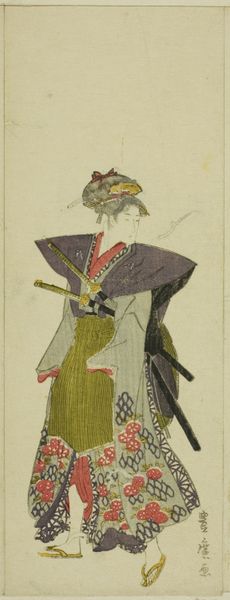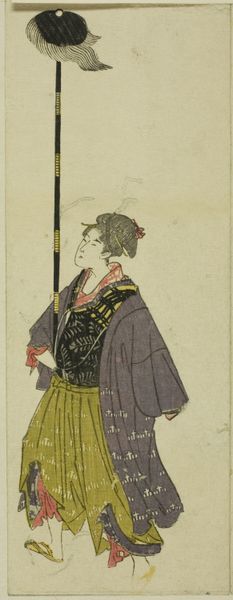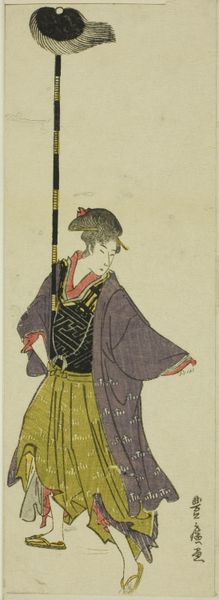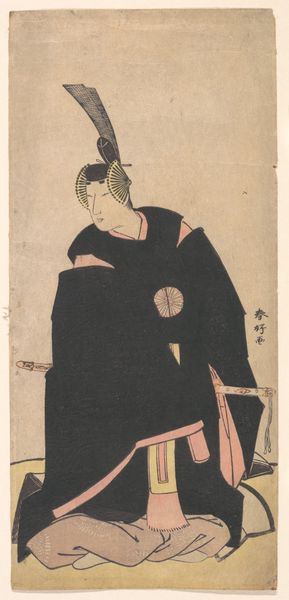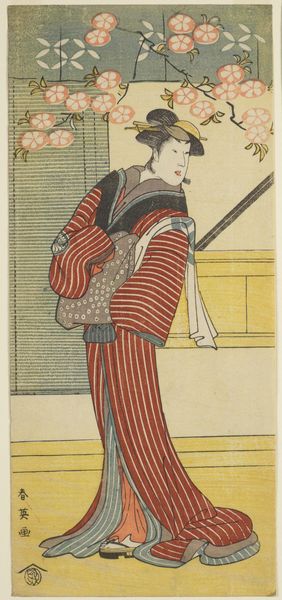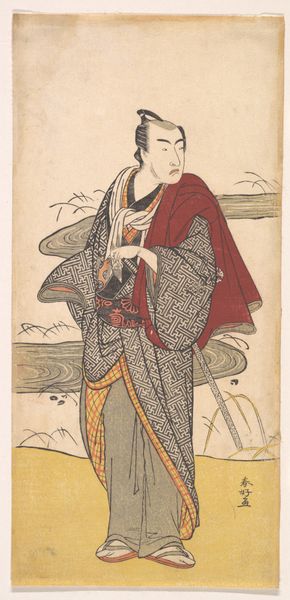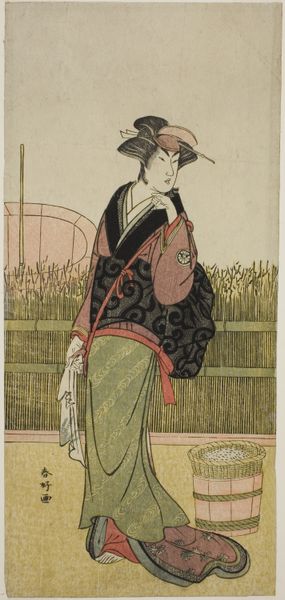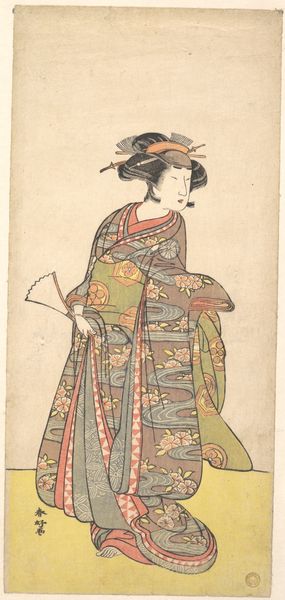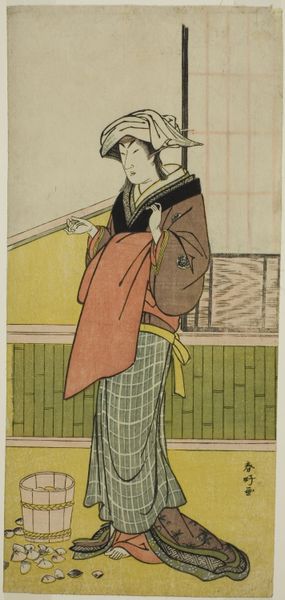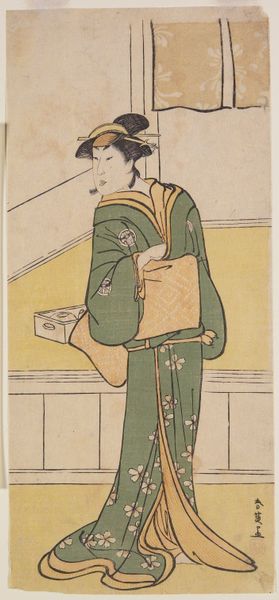
#
portrait
# print
#
ukiyo-e
#
japan
#
figuration
Dimensions: 24.5 × 9.6 cm
Copyright: Public Domain
Curator: Standing before us is “Parody of a daimyo procession,” a print by Utagawa Toyohiro, circa 1805-1807, housed right here at The Art Institute of Chicago. Editor: My initial impression is one of quiet dignity despite what I imagine is a playful scene, given the artwork's title. There's something subtle in the muted colors and sparse details that captures a pensive mood, don't you think? Curator: Precisely! The muted palette, almost pastel-like, contributes to that tranquility. Note how Toyohiro employs negative space; the figure is set against a predominantly empty background, which focuses our attention on the patterning and subtle gradations within the robes. The composition, reduced to its bare essentials, creates an intimate viewing experience. Editor: Yes, but beyond the visual elegance, I'm curious about the production. As a print, it begs the question: How were these colors achieved? The layering of blocks to create those nuanced shades suggests a meticulous, labor-intensive process, and the quality of the paper would impact the final result. This challenges the notion of art as purely conceptual; it's deeply intertwined with its materiality. How does the socio-economic context affect these types of print? Curator: The *ukiyo-e* tradition from which this piece originates democratized art in many ways. It wasn't just about the elite. Toyohiro plays with established compositional strategies. In what ways does this artist disrupt established rules or honor them? How is that choice meaningful? Editor: And in making a parody, how does that become accessible and engaging to audiences of the era? We cannot separate the production of this image from the context of social norms of its time. The layering of ink on paper became a means to layer commentary on society, a craft embedded with subtle resistance. Curator: Well said! Looking at it, my mind shifts away from pure technique and back towards that arresting composure achieved by very deft composition and coloring. Editor: In that case, perhaps the parody lies as much in the unexpectedness of her quiet poise amidst such satirical, even anarchic, circumstances. A delicate balance, much like the labor of its making.
Comments
No comments
Be the first to comment and join the conversation on the ultimate creative platform.
